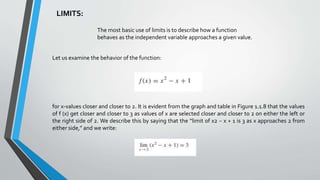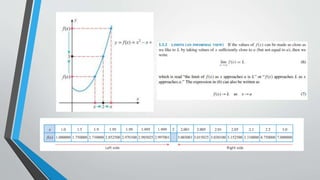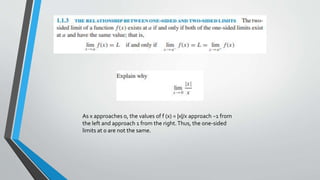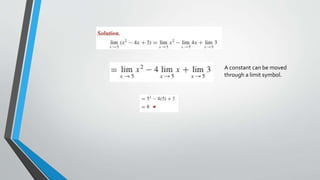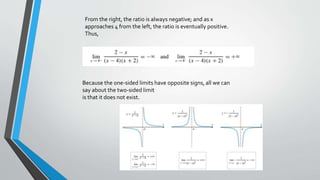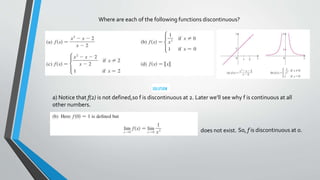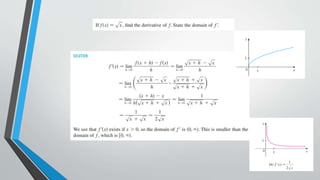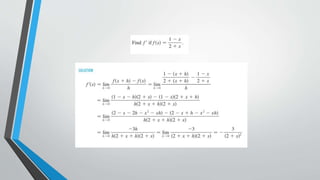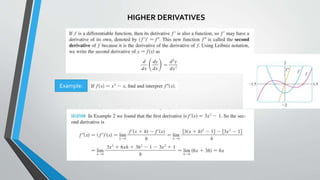This document provides an overview of key concepts in calculus, including limits, derivatives, and continuity. It discusses how limits describe the behavior of a function as its input approaches a certain value. Specific topics covered include tangent lines and limits, areas and limits, decimals and limits, one-sided limits, infinite limits, vertical asymptotes, computing limits using limit laws, and continuity of functions. The document also introduces derivatives as a new function whose value at each x is the derivative of the original function at that point.










